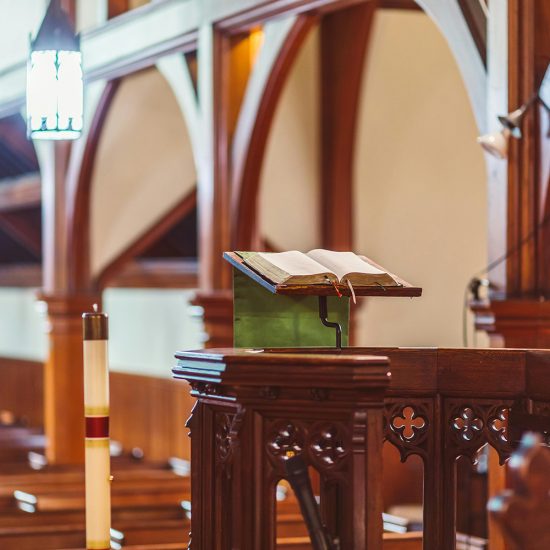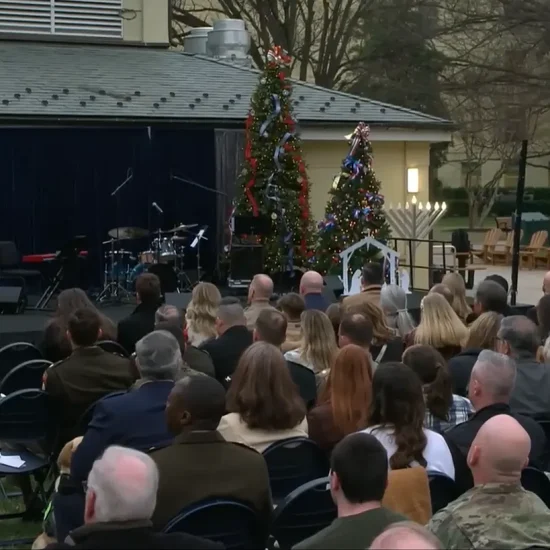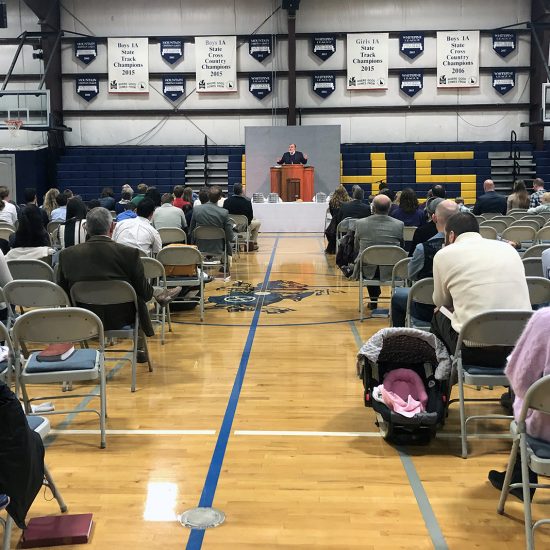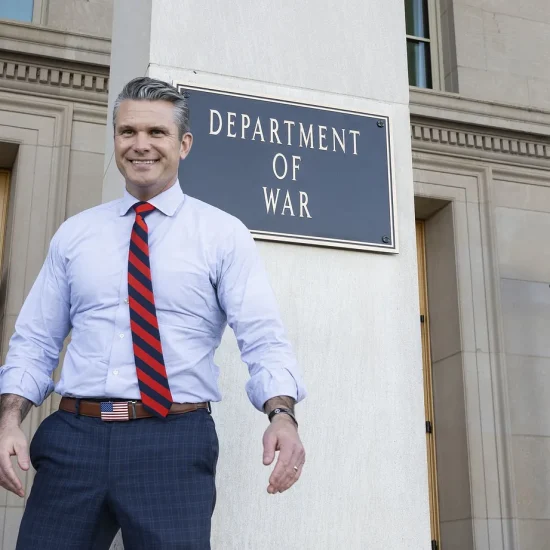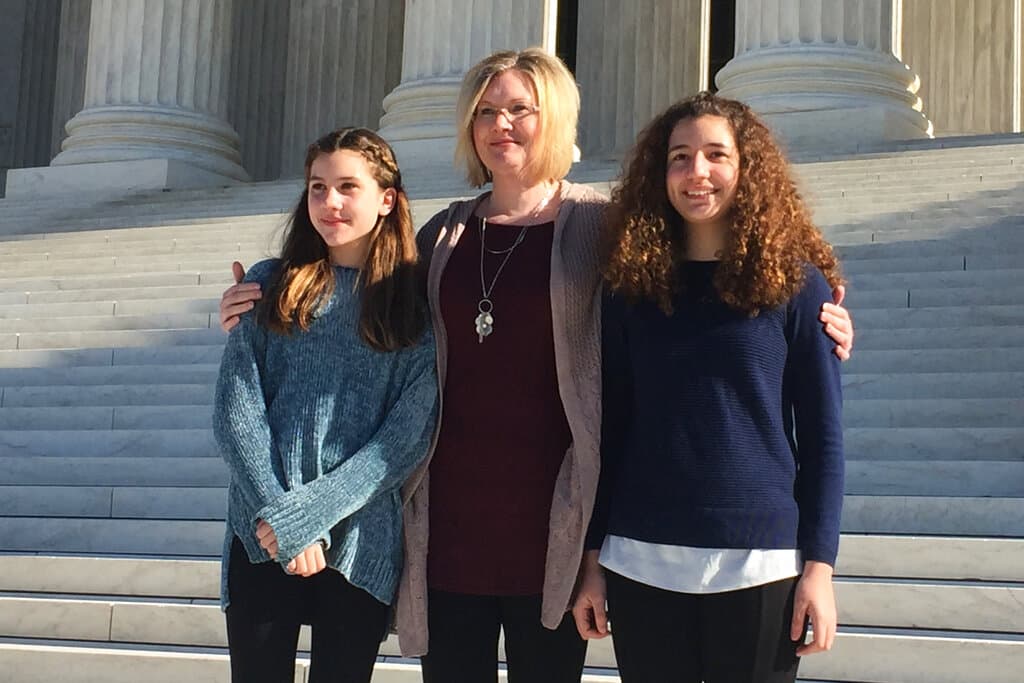

Kendra Espinoza of Kalispell, Montana, center, stands with her daughters Naomi and Sarah outside the U.S. Supreme Court, Wednesday, Jan. 22, 2020 in Washington. Espinoza is the lead plaintiff in a case the court heard Wednesday that could make it easier to use public money to pay for religious schooling in many states. Espinoza’s daughters attend the Stillwater Christian School in Kalispell, near Glacier National Park. (AP Photo/Jessica Gresko)
WASHINGTON (AP) — The Supreme Court’s conservative majority appeared ready Wednesday to reinvigorate a Montana scholarship program and make it easier to use public money to pay for religious schooling in many states.
The court was sharply divided along ideological lines in arguments over a provision in Montana’s constitution that bars state aid to religious schools. Montana is among 37 states with similar “no aid” clauses for religious education.
Chief Justice John Roberts took the bench with his colleagues at 10 a.m., showing no ill effects from a long day Tuesday presiding over the impeachment trial of President Donald Trump in the Senate, which Roberts gaveled to a close just eight hours earlier.
Like other conservatives, Roberts questioned a state Supreme Court ruling that struck down a scholarship program for private K-12 education that also makes donors eligible for up to $150 in state tax credits. The scholarships can be used at both secular and religious schools, but almost all the recipients attend religious schools.
Parents who sued to preserve the program, created by the legislature in 2015, argue that the “no-aid” clause in the state constitution violates their religious freedom under the U.S. Constitution. Several conservative justices appeared to agree.
“It’s permissible to discriminate on the basis of religion,” Justice Samuel Alito told the state’s lawyer, Adam Unikowsky. “That’s what you’re saying.”
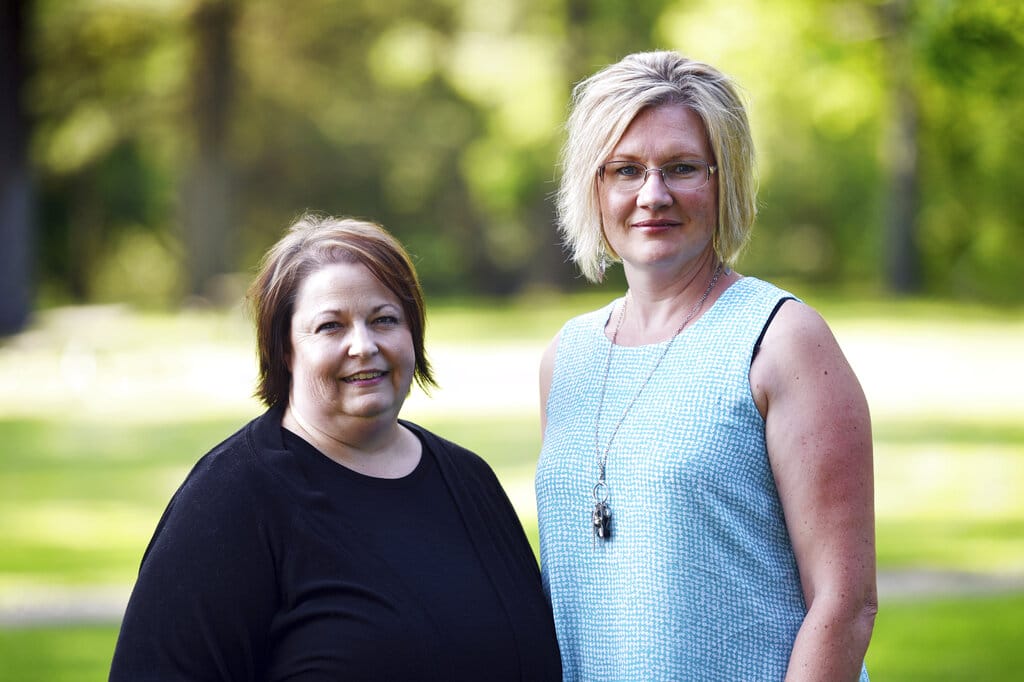
This July 31, 2019 photo shows Stillwater Christian School parents Jeri Anderson (l) and Kendra Espinoza at Woodland Park in Kalispell, Mont. The Supreme Court heard arguments Wednesday, Jan. 22, 2020 in a dispute over a Montana scholarship program for private K-12 education that also makes donors eligible for up to $150 in state tax credits. Advocates on both sides say the outcome could be momentous because it could lead to efforts in other states to funnel taxpayer money to religious schools. (Casey Kreider/The Daily Inter Lake via AP)
Justice Brett Kavanaugh, whose two daughters attend Catholic schools, referred to the “grotesque religious bigotry” against Catholics that he said motivated the original adoption of the Montana provision and others like it in the 1800s, although Montana’s constitution was redone in 1972.
The liberal justices saw the case very differently. Justice Ruth Bader Ginsburg was among those who said that by ending the program for private secular and religious schools alike, the Montana court was treating all parents the same. “So where’s the harm?” Ginsburg asked.
Richard Komer, representing the parents, said that ending the program for everyone was in essence a fig leaf intended to mask discrimination against parents who prefer religious education for their children.
Kendra Espinoza, the lead plaintiff, and her two daughters, Naomi and Sarah, came to the court from Kalispell, Montana. The children attend Stillwater Christian School, where Espinoza said she receives financial aid to afford the tuition of $7,735 a year for kindergarten through eighth grade.
After the hour-long arguments, it appeared that the state could prevail only if the justices were to decide if Espinoza and the other parents who sued did not have the right, or legal standing, to be in court. Roberts asked one question along those lines.
But on the larger issues of discrimination against the parents, the chief justice at one point pressed Unikowsky, the state’s lawyer, to explain why the court’s analysis of allegations of religious discrimination would be any different from a case involving racial discrimination.
Roberts said no one would defend shutting down all public swimming pools “because a higher percentage of African Americans come and use the pools.”
“No, of course not,” Unikowsky said.
“How is that different than religion?” Roberts asked.
Recent rulings from the Supreme Court, which now includes Trump appointees Neil Gorsuch and Kavanaugh, have favored religion-based discrimination claims. In 2014, the justices allowed family-held for-profit businesses with religious objections to get out from under a requirement to pay for contraceptives for women covered under their health insurance plans. In 2017, the court ruled for a Missouri church that had been excluded from state grants to put softer surfaces in playgrounds.
The Supreme Court also has upheld some school voucher programs and state courts have ratified others. But other state courts have relied on constitutional provisions banning the allocation of public funds to religious institutions to strike down school choice programs.
A decision in Espinoza v. Montana Department of Revenue, 18-1195, is expected by late June.

